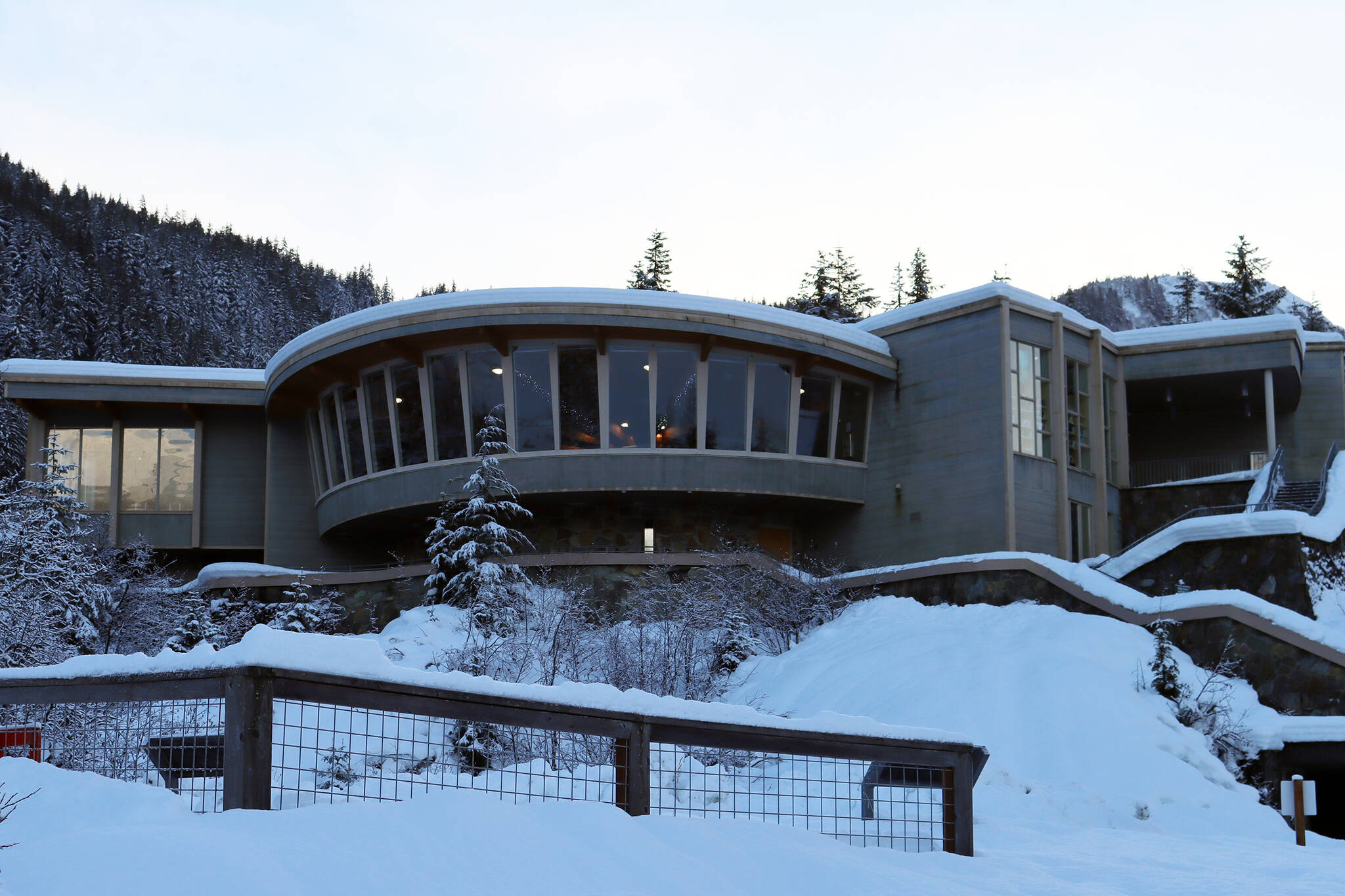By Ken Post
There’s a lot to chew on in the Forest Service’s draft environmental impact statement that allows even more commercial visitors at the Mendenhall Glacier Recreation Area.
Even though the recreation area is a Tongass Forest Plan-designated Special Interest Area, it is being carved up, despite objectives that include: 1) “Provide opportunities for public study, use, and enjoyment of unique natural areas that are suitable to, and do not compromise, the characteristics of each area and 2) Allow only facilities and recreation developments that contribute to the interpretation of natural features or provide for compatible public uses, and that blend with the natural setting.” 3) Provide for existing Recreation Opportunity Spectrum opportunities and activities, unless public use is specifically restricted for the protection of other resources.”
Here’s a few examples of how the Forest Service is “protecting” areas of the recreation area around the lake:
— Expanding the Nugget Creek trail into a loop along the shoreline;
— Building a new 14-foot-wide, paved lakeshore trail along most of the south side of the lake and permitting up to 23,000 tourists into portions of Dredge Lake;
— Adding new trails along the west side of the lake;
— Allowing “exponential” visitor growth in the northwest (formerly ice caves) portion of the lake, now called the Remote Visitor Center Area. That growth will come via motorized boats on the lake, transporting up to 214,000 visitors from April through October
— Anchoring a barge with portable bathroom facilities near the Remote Visitor Center Area dock;
— The Proposed Action “would have a major effect on scenic resources;”
— “In high value use areas that are popular with Juneau residents, additional recreation experiences and easier access to more areas of the MGRA could interrupt the solitude and quiet they have come to expect in some places such as the Dredge Lakes and West Glacier Units. The Lakeshore Trail, in particular, would be expected to have an impact on walking and bird watching activities for which the area along the shoreline of the lake has become known.”
How are some of these changes going to occur? The Forest Service will “rezone” units of the recreation area to accommodate more use. For example, the Visitor Center Unit would extend across the lake and absorb the ice caves area. Speaking of the Remote Glacier Visitor Area, the DEIS says, “many more” visitors at the base of the glacier and “conversational noise could approach crowd levels.” This area could average 1,000 visitors per day or more during the prime part of the season. The East Glacier Trail would also be rezoned for more hikers, which means commercial use could increase 110%.
Sure, not all these changes are going to occur next year. However, the Forest Service updated its capacity in 2015 and now it is doing it again only six years later. That’s how fast use is increasing. Tourism is no longer nibbling at the edges of the recreation area, it’s gobbling up chunks.
Despite the increase in numbers, the 2020 McDowell Market Demand & Economic Analysis report states, “Tour operators report no noticeable change in guest satisfaction…as the glacier recedes.”
This makes me wonder why people need to boat across the lake and “touch the glacier,” a goal identified in the 2019 Mendenhall Glacier Master Plan. The report also stated “Responses [by guides] are mixed regarding prioritization of the remote visitor facilities and boat access” and “Tour operators hold mixed opinions about the need for boat access and remote facilities. Some operators suggested a lake cruise, but not allowing remote access. Others strongly questioned the need for remote access at all…”
Undoubtedly, locals will derive some benefit from the improvements. We’ll use the trails, but is that what this proposal is really about? From all appearances, the tourist industry’s continued growth is what is actually being protected.
Don’t get me wrong, I love tourists coming to our beautiful town, and it’s a bonus businesses have grown and prospered accommodating them. Unfortunately, the level of proposed development in a special interest area is too big a bite.
Comments can be sent to: https://cara.ecosystem-management.org/Public//CommentInput?Project=53780
• Ken Post is a Juneau resident and retired Forest Service employee. Columns, My Turns and Letters to the Editor represent the view of the author, not the view of the Juneau Empire. Have something to say? Here’s how to submit a My Turn or letter.

